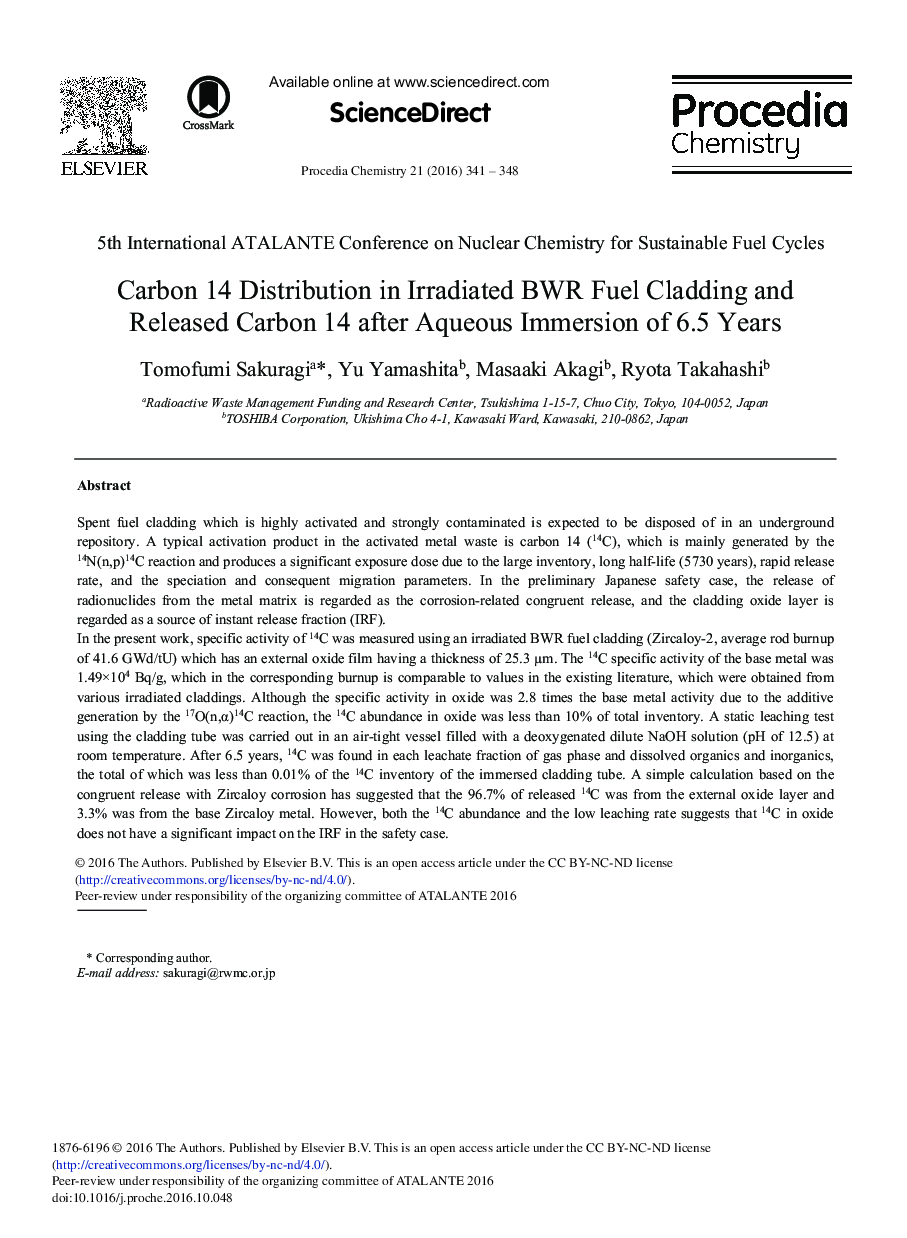| کد مقاله | کد نشریه | سال انتشار | مقاله انگلیسی | نسخه تمام متن |
|---|---|---|---|---|
| 4910949 | 1427898 | 2016 | 8 صفحه PDF | دانلود رایگان |

Spent fuel cladding which is highly activated and strongly contaminated is expected to be disposed of in an underground repository. A typical activation product in the activated metal waste is carbon 14 (14C), which is mainly generated by the 14N(n,p)14C reaction and produces a significant exposure dose due to the large inventory, long half-life (5730 years), rapid release rate, and the speciation and consequent migration parameters. In the preliminary Japanese safety case, the release of radionuclides from the metal matrix is regarded as the corrosion-related congruent release, and the cladding oxide layer is regarded as a source of instant release fraction (IRF).In the present work, specific activity of 14C was measured using an irradiated BWR fuel cladding (Zircaloy-2, average rod burnup of 41.6 GWd/tU) which has an external oxide film having a thickness of 25.3 μm. The 14C specific activity of the base metal was 1.49Ã104 Bq/g, which in the corresponding burnup is comparable to values in the existing literature, which were obtained from various irradiated claddings. Although the specific activity in oxide was 2.8 times the base metal activity due to the additive generation by the 17O(n,α)14C reaction, the 14C abundance in oxide was less than 10% of total inventory. A static leaching test using the cladding tube was carried out in an air-tight vessel filled with a deoxygenated dilute NaOH solution (pH of 12.5) at room temperature. After 6.5 years, 14C was found in each leachate fraction of gas phase and dissolved organics and inorganics, the total of which was less than 0.01% of the 14C inventory of the immersed cladding tube. A simple calculation based on the congruent release with Zircaloy corrosion has suggested that the 96.7% of released 14C was from the external oxide layer and 3.3% was from the base Zircaloy metal. However, both the 14C abundance and the low leaching rate suggests that 14C in oxide does not have a significant impact on the IRF in the safety case.
Journal: Procedia Chemistry - Volume 21, 2016, Pages 341-348